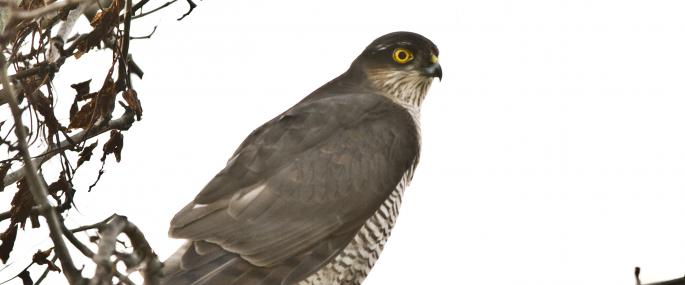2011-05-05 12:54
Scientific Name:
Accipiter nisus
Sparrowhawks are one of our smallest birds of prey, the male being somewhere between a blackbird and a collared dove in size. The female is larger, up to the size of a pigeon. Sparrowhawks are excellent bird-hunters, catching small species like finches, sparrows and tits using a mixture of methods that include ambushing prey from a perch or flying low and suddenly changing direction.
How to identify:
Sparrowhawks have rounded wings and a relatively long, narrow tail. Males are small with a blue-grey back and white underparts showing reddish-orange barring. The female is much larger with browner plumage above and grey bars below. They both have reddish cheeks.
Where to find it:
A common, diurnal raptor, sparrowhawks are found almost everywhere except the far north of Scotland.
How people can help:
To find out more about encouraging wildlife into your garden, visit our Wild About Gardens website: a joint initiative with the RHS, there's plenty of facts and tips to get you started.
Statistics:
Length: 28-40cm Wingspan: 62cm Weight: 150-260g Average Lifespan: 4 years
Conservation status:
Common. Listed under CITES Appendix II.
Did you know?:
Unlike many other birds of prey, sparrowhawks build their own nest, making a new one every year.
Seasons:
Spring
Summer
Autumn
Winter
Image:
